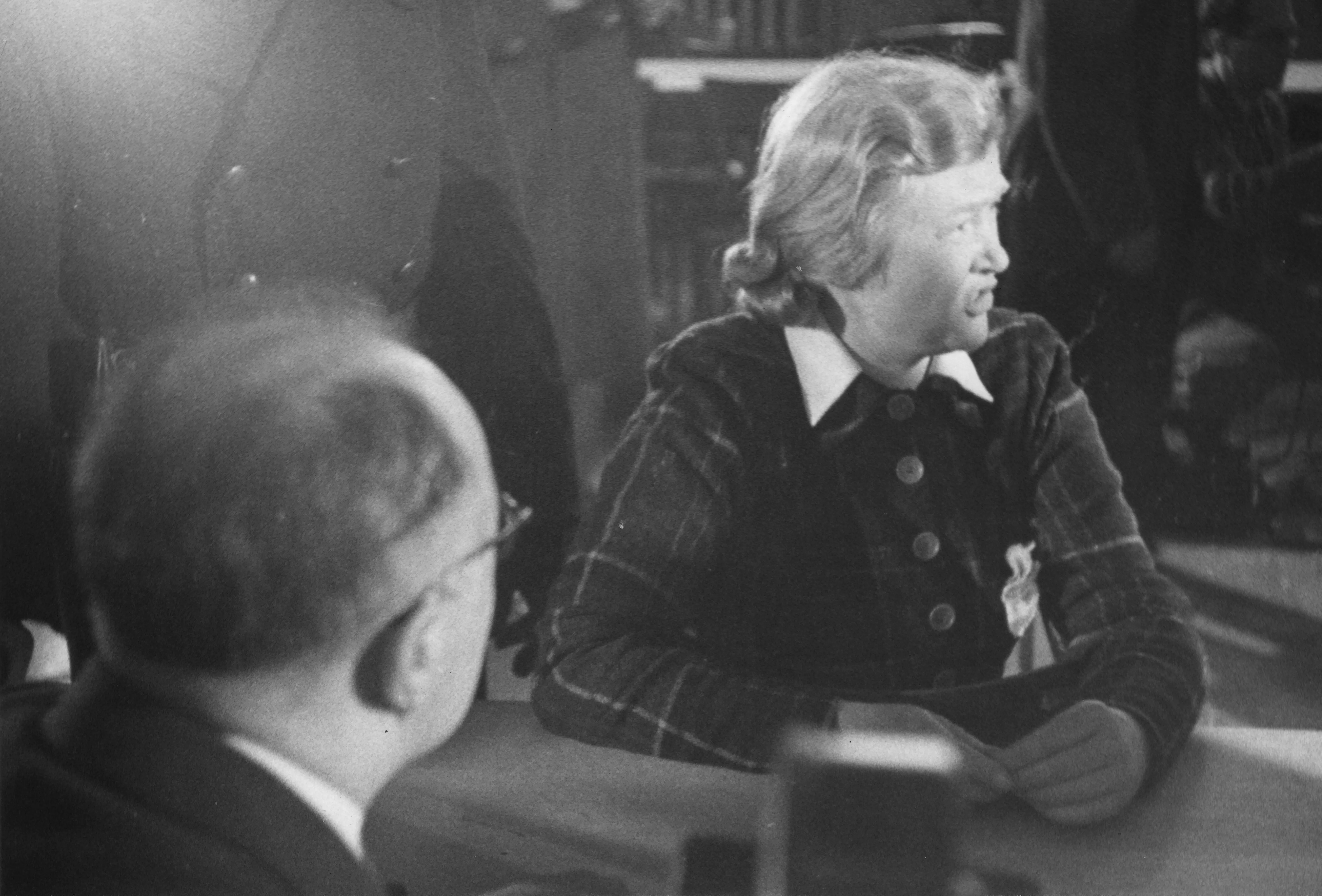Did Ed Gein really know Ilse Koch? His connection to ‘Witch of Buchenwald’ explained
-
 German war criminal Ilse Koch, known as 'The Witch of Buchenwald', during her trial at the District Court at Augsburg, Bavaria, Germany, 12th December 1950. The trial of the wife of Nazi commander Karl-Otto Koch, lasted seven weeks and ended in a guilty verdict and a sentence of life imprisonment. (Photo by European/Archive Photos/Getty Images)
German war criminal Ilse Koch, known as 'The Witch of Buchenwald', during her trial at the District Court at Augsburg, Bavaria, Germany, 12th December 1950. The trial of the wife of Nazi commander Karl-Otto Koch, lasted seven weeks and ended in a guilty verdict and a sentence of life imprisonment. (Photo by European/Archive Photos/Getty Images)In Monster: The Ed Gein Story, Netflix’s latest addition to Ryan Murphy and Ian Brennan’s Monster anthology, the boundaries between historical horror and human depravity blur once more.
While the series dramatizes the life of notorious murderer and graverobber Ed Gein, it also resurrects the chilling story of Ilse Koch—the so-called “Witch of Buchenwald.”
Though the show hints at a twisted connection between the two, viewers are left wondering: did Ed Gein actually know Ilse Koch?
The real-life story behind Ed Gein is one of isolation, obsession, and violence, set against the frozen landscapes of 1950s Wisconsin.
Meanwhile, Ilse Koch, decades earlier, embodied another form of monstrosity—the human face of Nazi cruelty within the Buchenwald concentration camp.
Their stories are separated by time and place but united through infamy and the cultural fascination with evil that Monster seeks to explore.
Did Ed Gein and Ilse Koch really cross paths? The truth behind the show’s connection
While Monster: The Ed Gein Story dramatizes a disturbing connection between Ed Gein (played by Charlie Hunnam) and Ilse Koch (Vicky Krieps), there is no historical evidence that the two ever met or corresponded.
The show invents this link to emphasize how Gein’s twisted worldview was shaped by the era’s macabre fascination with wartime atrocities.
In the series, Gein’s love interest Adeline Watkins (Suzanna Son) introduces him to a comic book and newspaper clippings about Ilse Koch, a Nazi war criminal infamous for allegedly crafting lampshades and gloves from human skin.
The show then imagines that Gein becomes fixated on her, even envisioning a radio conversation between them after his institutionalization.
Historically, Ilse Koch’s crimes had already become international news long before Gein’s 1957 arrest.
Known as the “Witch of Buchenwald,” Koch was the wife of Nazi commander Karl-Otto Koch, who oversaw one of the Third Reich’s most brutal camps.
Witnesses later accused her of selecting tattooed prisoners to be murdered so their skin could be used for macabre trinkets.
Although the American tribunal found “insufficient evidence” to convict her on those particular charges, Koch was sentenced to life imprisonment for her role in the systemic torture and murder of prisoners.
General Lucius D. Clay, then U.S. military governor in Germany, reduced her initial sentence to four years but stated plainly in 1948:
“I hold no sympathy for Ilse Koch. She was a woman of depraved character and ill repute.”
Decades later, actress Vicky Krieps admitted to Variety that portraying Koch was psychologically taxing but ultimately revealing:
“She wants to be perfect, to have the perfect house, the perfect husband — and she doesn’t realize that what she’s doing is going over dead bodies.”
As for Ed Gein, while he, too, desecrated bodies and created household items from human remains, there is no proof that Koch’s case directly inspired him.
Her trial did, however, dominate postwar media, and the parallels between their atrocities are hard to ignore — which Monster cleverly uses to underline how horror transcends geography and ideology.
Everything we know about Monster: The Ed Gein Story
The third installment in Netflix’s Monster anthology, Monster: The Ed Gein Story, follows the life of one of America’s most infamous killers. Created by Ian Brennan (with Ryan Murphy serving as producer), the series traces Gein’s descent into madness, exploring how isolation, trauma, and religious obsession birthed a real-life nightmare.
Charlie Hunnam leads the cast as Gein, delivering a performance that blends quiet vulnerability with chilling detachment.
He’s joined by Suzanna Son as Adeline Watkins, Laurie Metcalf as Augusta Gein, and Vicky Krieps as Ilse Koch. Tom Hollander also appears as Alfred Hitchcock, underscoring the show’s meta-commentary on how Gein’s crimes inspired the golden age of cinematic horror — from Psycho to The Texas Chain Saw Massacre and The Silence of the Lambs.
Premiering on October 3, 2025, the series examines not only Gein’s psyche but also the cultural machinery that mythologized him.
As Murphy and Brennan suggest, monsters aren’t just born — they’re made, shaped by the societies that consume their stories. Despite mixed reviews, the series has drawn attention for its haunting visuals and provocative intersections of fact and fiction.
It’s currently available to stream on Netflix, offering viewers a darkly reflective journey into one of true crime’s most disturbing legacies.
Monster: The Ed Gein Story intertwines two terrifying figures, not because they shared a real connection, but because they represent two sides of humanity’s obsession with horror.
Gein’s crimes revealed what one man could do in isolation; Koch’s exposed the evil that can thrive within systems of power.
By merging their stories, Ryan Murphy’s series forces viewers to confront an uncomfortable truth: the most horrifying monsters are often those born from human hands and collective silence.
TOPICS: Ed Gein
- What Netflix’s Monster didn’t get right — 8 facts the series twisted about Ed Gein’s real story
- Did Ed Gein have any contact with Birdman in real life? Truth behind the character from Netflix's Monster, explained
- Fact Check: Did Netflix’s Monster get Ed Gein’s Ted Bundy story right?
- Was the real Adeline Watkins truly Ed Gein's girlfriend? The truth behind Netflix's Monster character, explained